This is a very simple, effective way of weeding without chemicals (and almost without effort). It comes from the Abbey Physic Garden in Faversham.
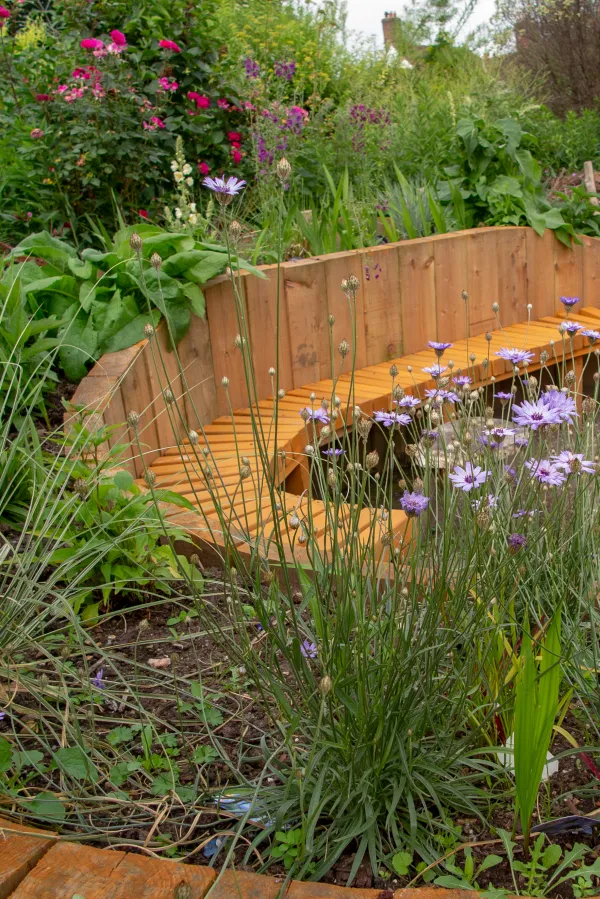
The Abbey Physic garden is a wildlife-friendly, organic community garden with a specific aim to improve mental and physical health.
Start with some cardboard
I visited them last March. And I saw a number of shrubs and small trees with cardboard covering the earth around them.
You then add homemade compost on top of the cardboard, so you can’t see the cardboard.
The cardboard helps suppress perennial weeds. It slowly decomposes with the mulch.
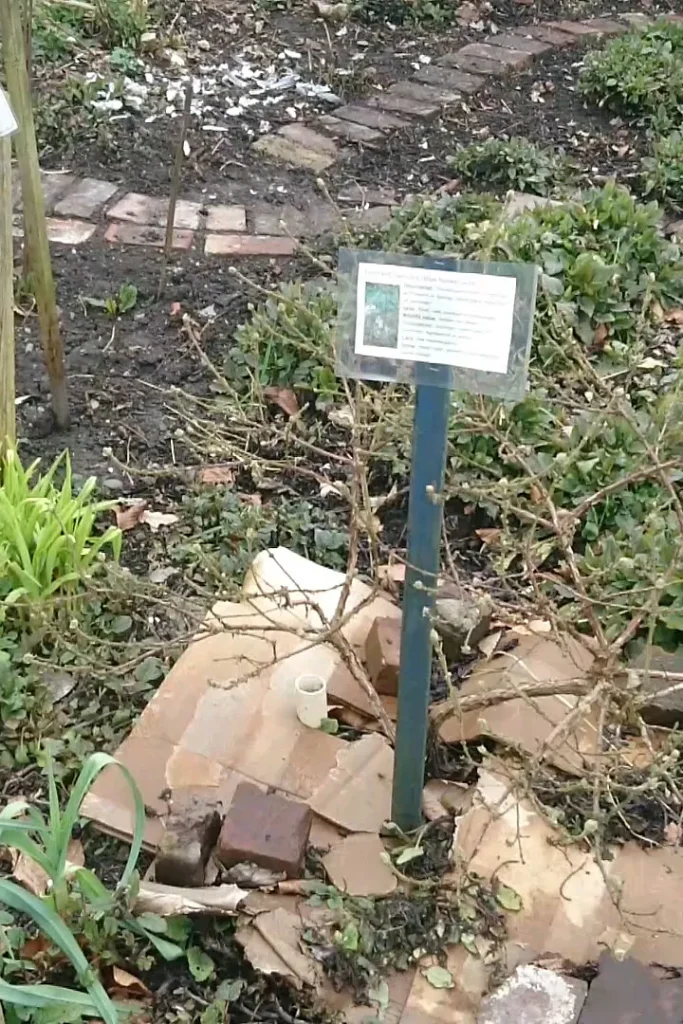
I tried this out around a fairly newly planted silver birch. It’s in a bed which gets very crowded, and I wanted to give it space, not just from weeds but also from encroaching plants.
But there are snowdrops planted around the base of the tree. I didn’t want to miss out on those.
Time it so you still get bulbs…
In April, when the snowdrop foliage was gone, I covered the earth around the tree with cardboard.
I added a layer of mulch on top. I didn’t have to weed around the tree at all until around late August, when some annuals weeds settled on top.
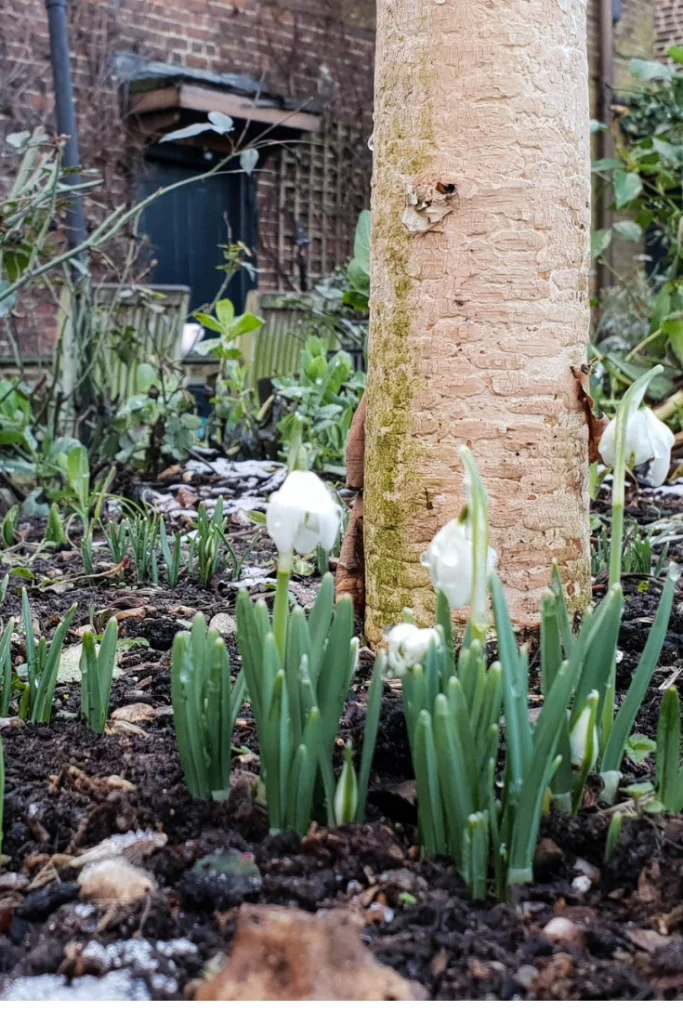
And now, in February, all the snowdrops have come through. So the cardboard has now mulched down, improving the soil.
I’ll add another layer of cardboard and mulch when the snowdrop foliage dies down.
And I’m going to protect several newly planted rose bushes in the same way.
Better than a weed-suppressing membrane?
I prefer cardboard to a manufactured weed-suppressing material because cardboard decomposes. I have one bed that is infested with bindweed, but which has glorious bulbs in the spring.
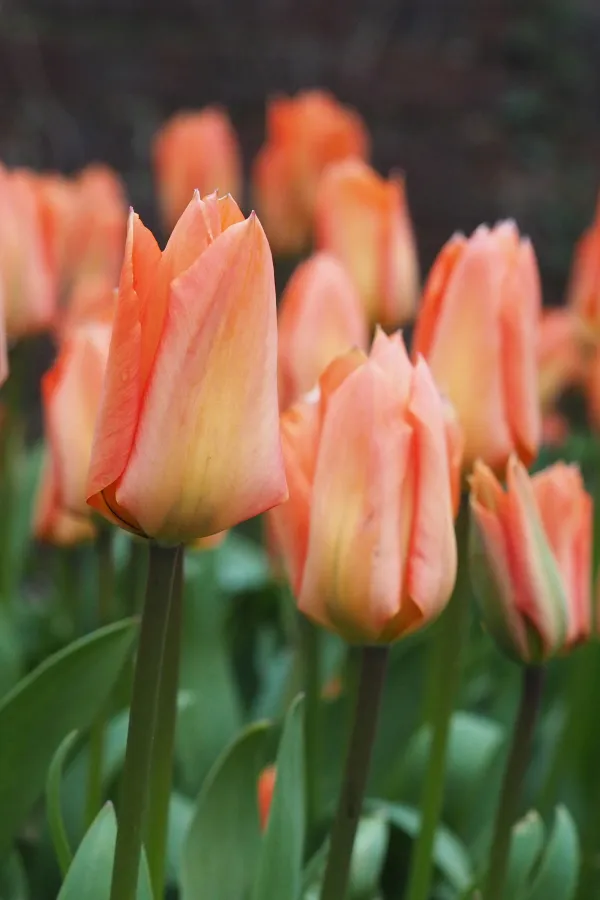
A cardboard layer may help suppress the bindweed over the summer and it will have disappeared by the time the bulbs come up this time next year.
I’ll report back on how successful it is.
Could you put a layer of cardboard over the whole bed?
In theory, I could get rid of my chronic weed problem by putting a layer of cardboard and mulch over the whole border.
However, there are a number of perennial plants and bulbs that come up at different times. I wouldn’t cover a border in cardboard while there are alliums, dahlias or other plants waiting to emerge.
I also love self-seeded plants, and those won’t pop up through cardboard.
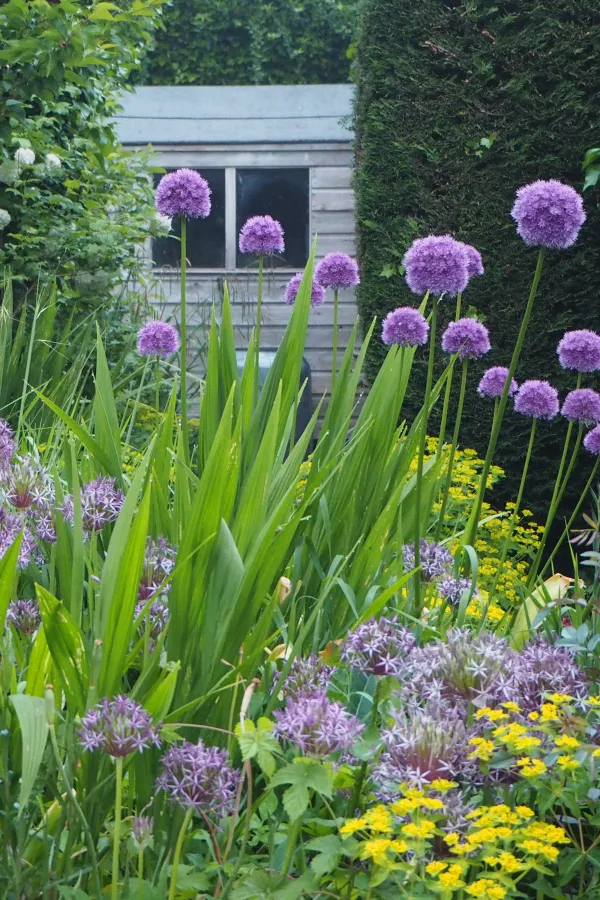
But the self-seeders do crowd out newly planted plants. So I have found it useful to add the cardboard and mulch around anything young that I think needs a bit of space to get established.
Not all weeds….
It took me a while to grasp the difference between weeding out annual weeds and perennial weeds.
Annual weeds come from seeds. These are blown around on the wind, dropped by birds or dug up when you dig the soil.

A weed suppressing layer, such as cardboard, will only prevent you exposing annual weed seeds through digging. It won’t stop them blowing in and landing on the mulch.

Perennial weeds, such as bindweed and ground elder, spread by their roots. These are often dormant in the winter.
A light-preventing layer, such as cardboard and mulch, will discourage them. Although they will certainly try to come up elsewhere. But starving perennial weeds of light can be more effective than digging them up, as so many can re-sprout from the tiniest bit of root.

Leave a Reply